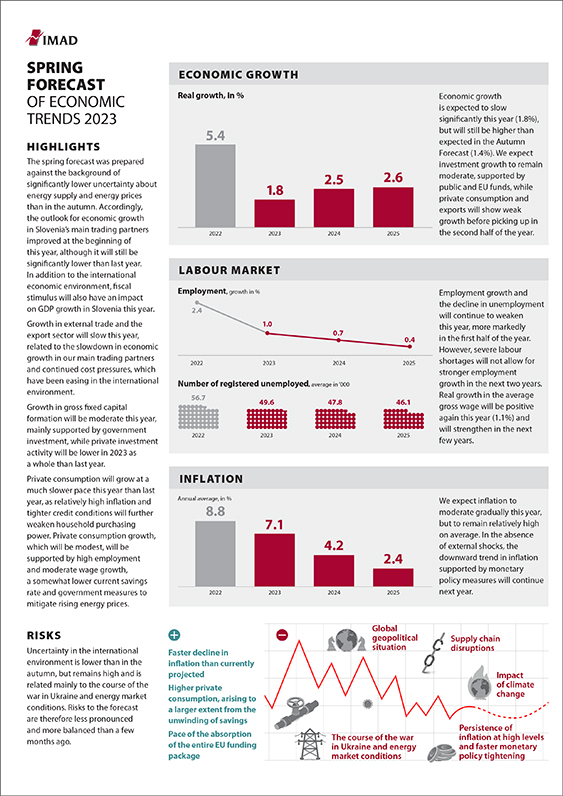Spring forecast
Spring Forecast of Economic Trends 2023
Since autumn, uncertainty about energy supply and prices started to recede and the outlook for economic growth in Slovenia’s main trading partners has improved accordingly, although it will remain significantly lower this year and in the next two years than last year. Economic growth in Slovenia is also expected to slow significantly this year (from 5.4% last year to 1.8%), but will exceed our expectations from autumn (1.4%). We expect investment growth to remain moderate, supported by public and EU funds, and exports and private consumption to show weak growth before picking up in the second half of the year. We expect inflation to moderate gradually this year, but to remain relatively high in the first few months of this year. In the absence of external shocks, it will continue to gradually weaken next year and could only decline towards 2% after 2024. Growth in employment and decline in unemployment will moderate this year, but severe labour shortages will not allow for stronger employment growth over the next two years. Risks to the forecast are less pronounced and more balanced than a few months ago, given the lower uncertainty in the international environment. Nevertheless, uncertainty remains high and is related mainly to the course of the war in Ukraine and the energy market conditions. Downside risks to the forecast include possible persistence of inflation at high levels, the impact of climate change, and geopolitical and epidemiological conditions. However, there are also some upside risks to the baseline projections of economic growth at global, EU and national level in the event of faster deceleration of inflation or higher private consumption. A more effective absorption of the full package of EU funds and fiscal effects of reform measures could also have a positive impact on economic growth.

